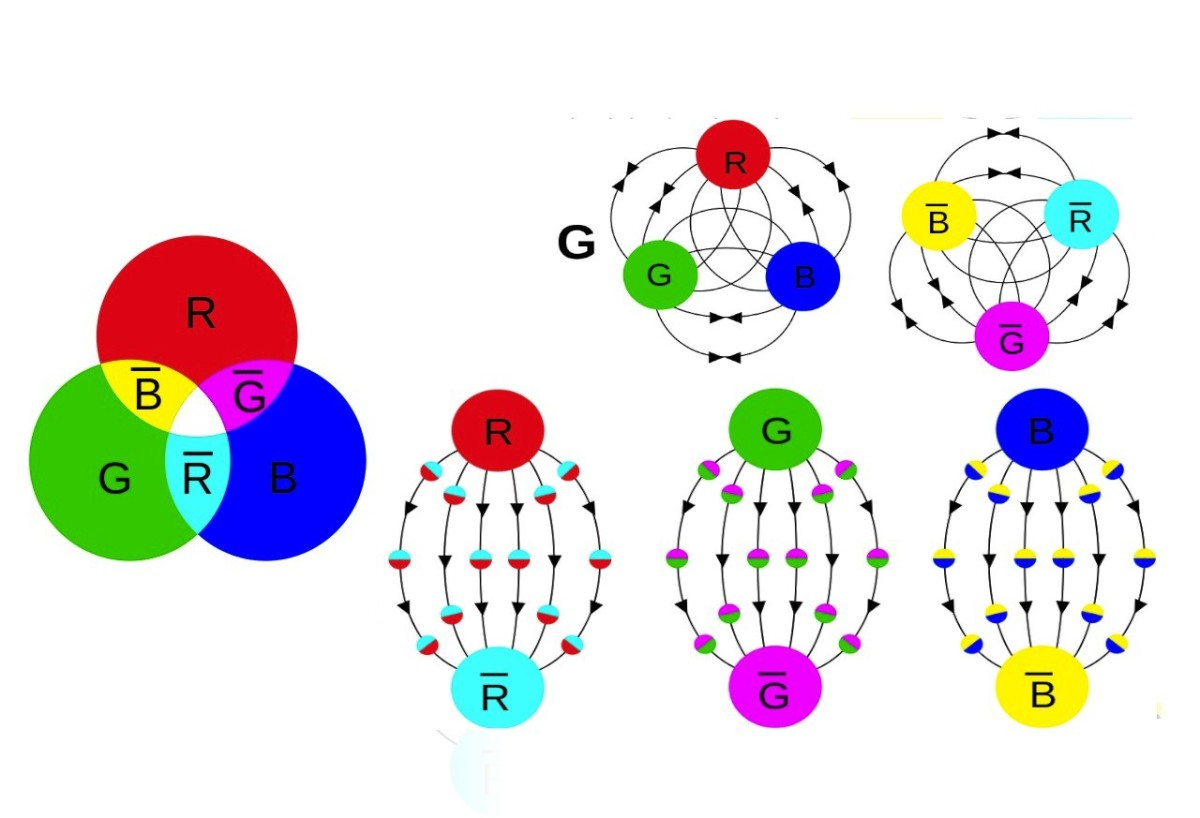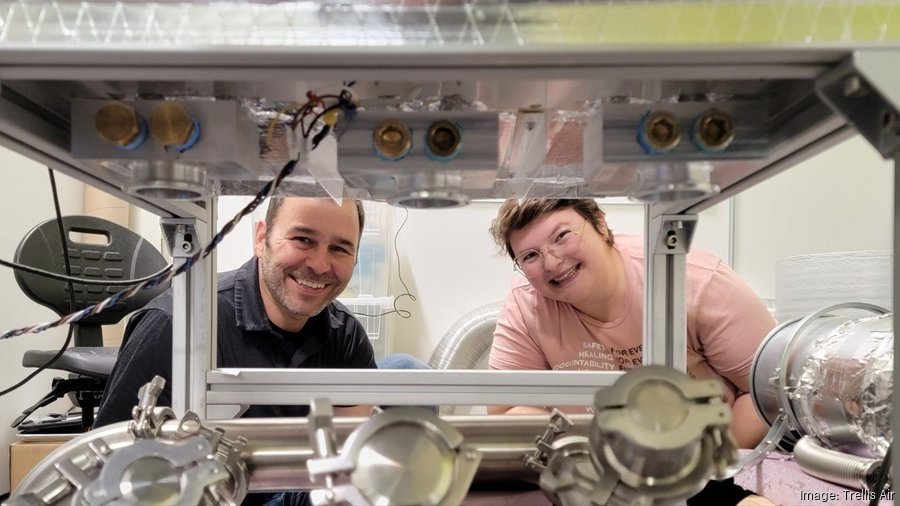Axions are theoretical particles that are believed to play a crucial role in explaining dark matter, the elusive substance that makes up the majority of the universe’s mass. As researchers delve deeper into the mysteries of particle physics, these fundamental quasiparticles are gaining attention for their potential to unlock secrets about the cosmos. Recent experiments, notably from a collaboration between Harvard and King’s College London, have made groundbreaking strides in axion detection, utilizing unique quantum materials that enhance their properties. By simulating axions with quasiparticles, scientists are inching closer to confirming their existence and, consequently, understanding the nature of dark matter. The implications of these findings not only advance particle physics but also pave the way for innovative technologies that may transform scientific paradigms.
In the realm of theoretical physics, axions stand out as a potential building block of the universe, intricately linked to the dark matter that envelops our cosmos. Described as hypothetical lightweight particles, they have sparked extensive research into their possible roles as quasiparticles within quantum materials. Recent advances in the study of these particles, especially focusing on their detection mechanisms, signal a new phase in our quest for understanding the universe’s hidden mass. Using cutting-edge experimental techniques, scientists are beginning to explore the properties of these fundamental entities, which may offer a clearer picture of both the fabric of the universe and the enigmatic nature of dark matter. This exciting frontier in particle physics not only seeks to validate the existence of axions but may also contribute to future technological innovations that harness the unique properties of quantum phenomena.
Understanding Axions: The Key to Unlocking Dark Matter’s Secrets
Axions are theoretical elementary particles that scientists believe could help explain the mysteries of dark matter, a substance thought to make up about 85% of the universe’s mass. The quest to understand dark matter has intrigued physicists for decades, and axions offer a plausible solution. According to current theories, axions would be incredibly light and interact very weakly with ordinary matter, making them extremely difficult to detect. Their existence could provide profound insights into the fundamental structure of the cosmos and the laws of physics governing it.
Recent advancements in axion research have opened new pathways for detection. With researchers now utilizing quasiparticles stimulated by axion interactions, the potential for breakthroughs in particle physics looks promising. By mapping the unique properties of these quasiparticles, scientists can create more effective detectors. Harnessing axions in this way not only illuminates dark matter but also enhances our understanding of fundamental physics, paving the way for future discoveries.
The Role of Quasiparticles in Axion Detection
Quasiparticles, which are collective excitations that behave like particles within solids, play a critical role in enabling researchers to hunt for axions. In a groundbreaking experiment, scientists demonstrated that they can use the interactions between axions and quasiparticles to confirm the existence of dark matter particles. This innovative approach employs manganese bismuth telluride, a material that channels axion quasiparticles and provides a platform for detecting their elusive signatures. This method leverages advanced ultrafast laser optics to observe quasiparticle dynamics, turning theoretical concepts into observable phenomena.
By capturing the intricate behaviors of axion quasiparticles, this research lays the groundwork for futuristic technologies linked to particle physics and cosmology. The ability to manipulate these quasiparticles has far-reaching implications; not only will it aid in dark matter detection, but it may also lead to the realization of novel quantum technologies in the future. The research highlights how quasiparticles can act as a bridge between abstract theoretical particles and practical applications, showcasing the vital role of quantum materials in modern science.
Advancements in Particle Physics: A Closer Look at Dark Matter
Particle physics continues to evolve, especially with recent discoveries related to dark matter. The quest to understand dark matter is critical because it accounts for a substantial portion of the cosmos but remains nearly invisible. Researchers have proposed various theoretical particles, including axions, to explain this enigma. The exploration of these particles not only answers questions about the universe’s make-up but also unveils new facets of the fundamental forces of nature. As new experimental techniques emerge, the prospects of identifying dark matter particles become increasingly plausible.
The collaboration of international research teams, such as those from Harvard and King’s College London, illustrates a multidisciplinary approach to this complex challenge. By integrating condensed-matter physics with high-energy physics and material science, these collaborations are forging a new direction in dark matter research. Plans to conduct experiments aimed at probing axion dark matter represent an exciting frontier that could usher in a deeper understanding of our universe and redefine our understanding of particle physics.
Quantum Materials: The Future of Dark Matter Research
Quantum materials, defined by their unique electronic and magnetic properties, are at the forefront of modern physics, particularly in dark matter research. Researchers have long sought materials that can effectively harness quantum effects to detect elusive particles like axions. Manganese bismuth telluride, identified in recent studies, is a prime example. Its exceptional properties make it an ideal candidate for engendering quasiparticles that can reveal the presence of dark matter axions. By employing precise nanofabrication techniques, scientists are capable of fine-tuning the properties of these materials to better suit their experimental goals.
The ongoing exploration of quantum materials will likely yield innovative tools for future experiments. Researchers aim to refine the detection techniques for axions, enhancing their ability to interact with dark matter. The ability to create precise environments in which to study these materials expands the possibilities for discovering far-reaching applications within both fundamental physics and technology. As scientists progress, quantum materials may not just aid in dark matter detection but could also lead us into a new era of quantum technology, reshaping our interaction with the universe.
Theoretical Foundations of Axions in Particle Physics
The theoretical underpinning of axions is deeply rooted in the quest to reconcile quantum mechanics with the fundamentals of gravity and cosmology. Initially proposed by physicist Frank Wilczek in the 1970s, axions emerged as a solution to the strong CP problem in quantum chromodynamics (QCD). These ultra-light particles were suggested as a means to explain certain aspects of particle behavior that remain unresolved. Thus, axions symbolize a convergence of fundamental physics concepts and cosmological implications, emphasizing their significance in the broader narrative of particle physics.
As theorists continue to evaluate the implications of axions, the potential for empirical validation grows stronger. The integration of experimental data, such as that gathered through quasiparticle interactions, reinforces the theoretical framework and enhances our understanding of the universe’s makeup. The continued research into axions not only serves to solidify their presence within the standard model of particle physics but also affords new avenues for exploring uncharted territories in fundamental physics.
The Impact of Recent Axion Research on Quantum Technologies
Recent advancements in axion detection have substantial implications for the development of quantum technologies. By leveraging the coherence and unique properties of axion quasiparticles, researchers can pioneer new devices and systems that harness the principles of quantum mechanics. For instance, the axion polariton represents an innovative light-matter interaction that could revolutionize optical applications, leading to the development of more efficient light sources and communication systems. This intersection of particle physics and technology suggests a future rich with potential.
Moreover, the increasing feasibility of detecting dark matter via axionic interactions may result in innovations that go beyond just fundamental research. Enhanced detection methods could drive the evolution of sensitive measurement tools, influencing fields such as material science and quantum computing. As investment and interest in quantum research escalate, the breakthroughs stemming from axion studies could catalyze a transformation not only in particle physics but also across diverse domains reliant on quantum technologies.
Looking Ahead: Future Prospects for Axion Research
As scientists continue to probe the nature of axions, the future of dark matter research appears hopeful. The collaborative efforts involving interdisciplinary teams are crucial in addressing the complexities of axion detection. By refining experimental conditions and employing advanced technology, researchers aim to improve the sensitivity of their experiments. Over the next decade, there is considerable optimism that these efforts will lead to the confirmation of axion existence, providing vital answers to longstanding questions in physics.
This ongoing excitement within the field reflects a growing commitment to unraveling the mysteries of the universe. Many scientists view the study of axions as a frontier akin to pivotal moments in physics history, such as the discovery of the Higgs boson. As diverse research groups actively pursue methodologies to identify dark matter, the pioneering spirit of inquiry heralds an era where the nature of our universe may soon become clearer, enabling humanity to further comprehend the very fabric of reality.
Collaborative Efforts in Axion Research: A Global Perspective
The success of recent axion research can be attributed to the collaborative efforts of international teams, including scholars from Harvard, King’s College London, and several other institutions. This spirit of cooperation fosters innovation, enabling scientists to build upon each other’s findings and methodologies. By bringing together a diverse set of expertise in condensed-matter physics, chemistry, and high-energy physics, researchers create a multifaceted approach that enhances the pursuit of dark matter detection. Such collaboration amplifies the potential to discover new particles and deepen our understanding of the universe.
The interdisciplinary nature of this research is crucial in developing robust detection methods for axions. It highlights the importance of not only scientific expertise but also innovative engineering techniques. For example, advancements in nanotechnology have played a pivotal role in enhancing the properties of materials like manganese bismuth telluride, enabling more effective axion research. As these collaborations progress, they inspire a global community of scientists to tackle one of the most elusive challenges in modern physics, ultimately paving the way for groundbreaking discoveries across multiple scientific disciplines.
Funding Initiatives Driving Axion Research Forward
Recent funding initiatives have played a vital role in propelling axion research forward, enabling scientists to explore the depths of particle physics and dark matter more comprehensively. Support from organizations such as the U.S. Department of Energy and the National Science Foundation provides essential resources for research teams to undertake ambitious projects. This financial backing allows for the acquisition of advanced instrumentation and the development of novel experimental techniques necessary for unraveling the mysteries of axions and dark matter.
Increased investment in scientific research fosters an environment of innovation and discovery. As funding continues to grow, the potential for significant breakthroughs expands, encouraging collaboration between researchers and institutions worldwide. The hope is that sustained funding will facilitate further advancements, leading to the conclusive detection of axions and a deeper understanding of dark matter’s role in the universe. The implications of such discoveries could not only reshape our scientific landscape but also influence practical applications in technology and materials science.
Frequently Asked Questions
What are axions and how do they relate to dark matter?
Axions are hypothetical elementary particles proposed to explain dark matter, which accounts for nearly 85% of the universe’s mass. Their existence, if confirmed, could provide crucial insights into the composition of the universe and the fundamental theories of particle physics.
How are axions detected using quasiparticles?
Researchers detect axions by utilizing quasiparticles, such as axion quasiparticles, which simulate axion behavior. When a dark matter axion interacts with certain materials, it excites these quasiparticles, allowing scientists to indirectly confirm the presence of axions through their observable reactions.
What role do quantum materials play in axion detection?
Quantum materials, like manganese bismuth telluride, have unique electronic and magnetic properties that make them ideal for nurturing axion quasiparticles. By fabricating these materials into specific structures, researchers can create effective platforms for detecting dark matter axions through advanced measurement techniques.
Why are axions considered a groundbreaking topic in particle physics?
Axions represent a significant breakthrough in particle physics because they offer potential explanations for dark matter, one of the field’s most challenging puzzles. The study of axions is gaining momentum, similar to the excitement surrounding the Higgs boson prior to its discovery.
What innovative techniques are being used in axion research?
Recent axion research employs sophisticated techniques like ultrafast laser optics and precision nano-fabrication to manipulate and observe axion quasiparticles. These technologies help scientists capture dynamic behaviors of quasiparticles, turning theoretical concepts into observable phenomena.
How might future discoveries related to axions impact our understanding of the universe?
Future discoveries regarding axions could revolutionize our understanding of the universe by illuminating the nature of dark matter, enhancing cosmological models, and potentially leading to new technologies derived from quantum materials and particle physics.
| Key Point | Details |
|---|---|
| Axion Existence | Scientists theorize axions as a potential component of dark matter and a key to understanding the universe. |
| Groundbreaking Experiment | A research team from Harvard and King’s College London is experimenting with quasiparticles to detect axions. |
| Role of Quasiparticles | Axion quasiparticles can react to dark matter axions, helping confirm their existence through measurable interactions. |
| Nobel Prize Insight | Frank Wilczek emphasizes the significance of these findings as a breakthrough in understanding axion particles. |
| Material Used | Researchers utilized manganese bismuth telluride, which has unique electronic and magnetic properties, in the experiment. |
| Future Prospects | The team aims to refine their findings to improve detection of dark matter, potentially paving the way for new quantum technologies. |
Summary
Axions are at the forefront of particle physics research, representing a potential key to understanding dark matter, which constitutes a significant portion of the universe’s mass. Recent advancements by a team of researchers have showcased the potential of utilizing axion quasiparticles in detecting these elusive particles. The innovative experimental techniques and interdisciplinary approach highlight the promising future of axion research, suggesting that we may soon unravel one of the universe’s greatest mysteries.



